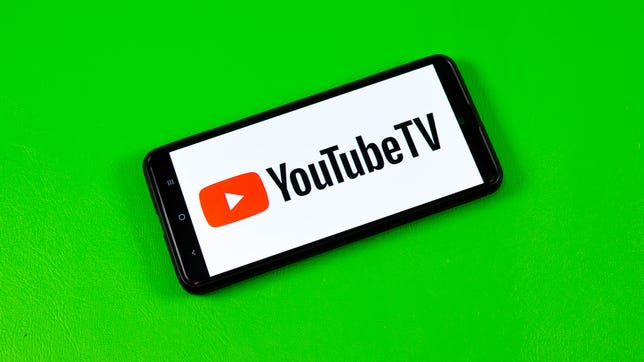Technologies
YouTube TV vs. Hulu Plus Live TV: The Pros and Cons of Each Streaming Service Rated
Hefty cable bill? Here are two premium live TV options which can save you money without missing out on the content you love.
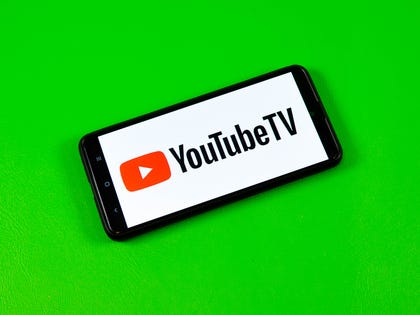
We’re all watching more TV, and with sports such as NBA basketball and NHL hockey getting to the sharp end of their seasons, it’s a great time to consider a live TV streaming service. At CNET we’ve tested six of the major services, and our two favorites for premium users — cord-cutters who don’t mind paying a bit more for a full package of channels and features — are YouTube TV and Hulu Plus Live TV.
These two cost more than most streaming services but they’re still cheaper than cable. A premium subscription lets you cut the cable TV cord while keeping features like an advanced DVR with program guide and extensive on-demand content. Both services offer a large selection of live channels, such as CNN, ESPN and TNT, as well as local stations ABC, CBS, Fox, NBC and more. You can access them via media streamers such as Roku, Amazon Fire TV or Apple TV, your game console or your smart TV itself.
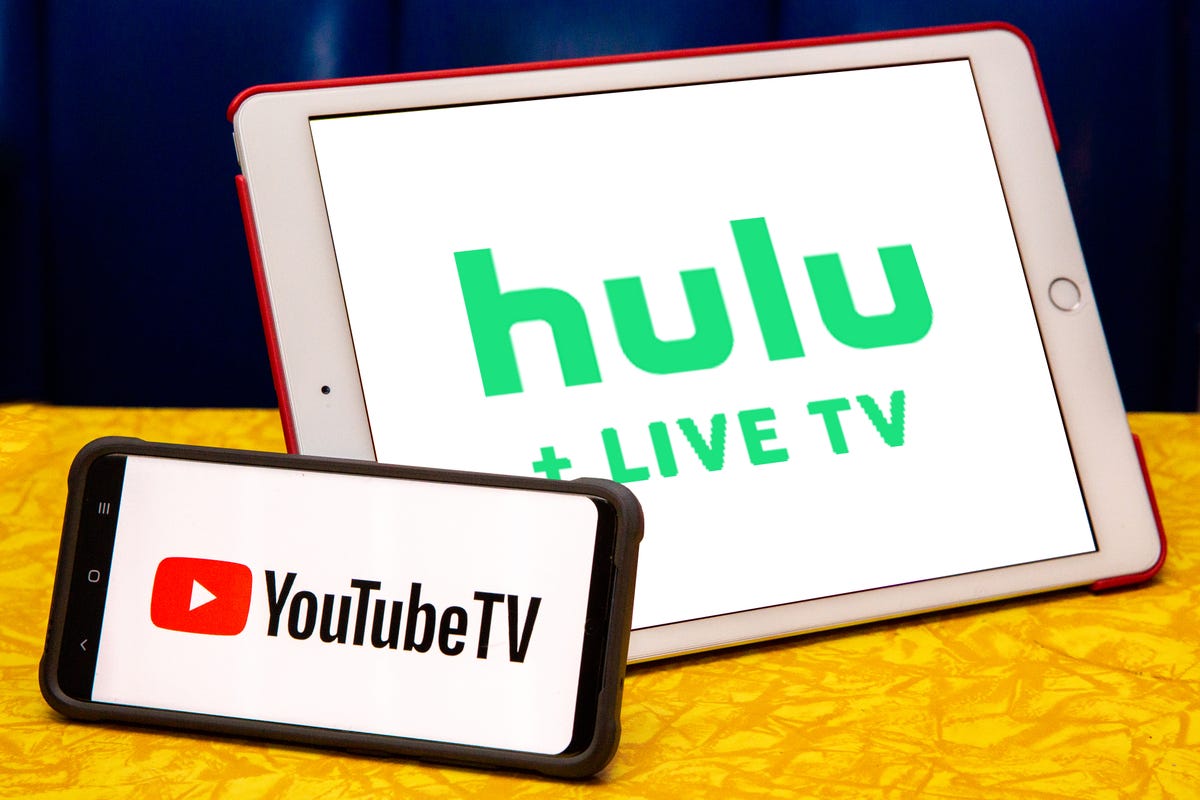

In general, we like YouTube TV best, because of a handful of important channels that Hulu lacks, including your local PBS station. It’s also $5 less expensive at $65 per month. However, Hulu also has an excellent selection of channels and adds a gigantic catalog of on-demand shows and movies as well as the Disney Bundle — Disney Plus and ESPN Plus — included in the $70 price.
Here’s how they stack up.
Sarah Tew/CNET
With an excellent channel selection, easy-to-use interface and best-in-class cloud DVR, YouTube TV is the best cable TV replacement. It offers a $20 4K upgrade, but the downside is there isn’t much to watch at present. If you don’t mind paying a bit more than the Sling TVs of the world, YouTube TV offers the highest standard of live TV streaming.
Hulu/Screenshot by Ty Pendlebury/CNET
Hulu’s greatest assets are the integration of a full complement of live TV channels with a massive catalog of on-demand content, and all for the one price. Hulu’s channel count is solid, including some must-have programming. Its price $70 includes Disney Plus and ESPN Plus. Starting Dec. 8, Hulu will change its Live TV packaging to include Disney’s new ad-supported plan for the $70 price, and offer higher-priced choices for people who don’t want to watch ads.
YouTube TV and Hulu Plus Live TV compared
| YouTube TV | Hulu Plus Live TV | |
|---|---|---|
| Base price | $65 per month | $70 per month |
| Free trial | Yes | Yes |
| Number of popular channels (out of 100) | 78 | 74 |
| Local ABC, CBS, Fox and NBC channels | Yes | Yes |
| Local PBS channels | Yes | No |
| Simultaneous streams per account | 3 ($20 for unlimited and 4K) | 2 ($10 option for unlimited) |
| Family member/user profiles | Yes | Yes |
| Cloud DVR storage | Unlimited | 50 hours ($10 option for 200 hours) |
| Fast-forward through or skip commercials with cloud DVR | Yes | No (Yes with $10 DVR option) |
Read more: Best Free TV Streaming Services: Roku Channel, Pluto TV, Tubi TV, Sling TV and More
Channels: YouTube wins but Hulu is solid too
The biggest difference comes down to channels. Comparing the total channel counts from our big list of the top 100 channels on every service, YouTube TV comes out on top with 79 from that list, compared to 73 on Hulu. That total doesn’t include every channel the services carry, just the ones in the top 100 as determined by editors at CNET, but it still provides a good indication.
The two share most major national channels including Cartoon Network, Disney Channel, ESPN, Fox News, NFL, TBS, USA Network and more, but there are a few differences.
Here’s a condensed version of that list showing the 15 of those 100 channels carried by one and not the other.
Major channel differences
| Channel | YouTube TV | Hulu Plus Live TV |
|---|---|---|
| PBS | Yes | No |
| A&E | No | Yes |
| AMC | Yes | No |
| BBC America | Yes | No |
| BBC World News | Yes | No |
| Boomerang | No | Yes |
| History | No | Yes |
| IFC | Yes | No |
| Lifetime | No | Yes |
| NBA TV | Yes | No |
| Sundance TV | Yes | No |
| Tastemade | Yes | No |
| Vice | No | Yes |
| WE tv | Yes | No |
Both services offer all four of the major local channels — ABC, CBS, Fox and NBC — in most areas of the country, and both also carry local affiliates from The CW and MyTV. Only YouTube TV carries PBS local stations; you can’t watch your local PBS affiliate live on Hulu.
Neither service offers many regional sports networks after both YouTube TV and Hulu dropped them in 2020. Beyond RSNs, however, YouTube TV has an advantage in national sports networks, with NBA TV available as part of its base package. Though YouTube TV used to have MLB Network as well, it dropped the channel earlier this year. You can pay another $11 to get the «Sports Plus» add-on that also includes Fox College Sports, GolTV, NFL RedZone and Fox Soccer Plus. Hulu users can sign up for a $10 package which includes NFL RedZone, Outdoor Channel, Sportsman Channel, MAVTV Motorsports Network, TVG and TVG2.
Premium channels like HBO, Starz and Showtime are also available for extra fees, and Hulu has two optional channel packages. One is an add-on for $8 per month with 17 channels including MTV Classic, CNBC World, the Cooking Channel and Science, and the other is a Spanish-language package with seven channels for $5. YouTube TV doesn’t have any additional channel packages, although you can add individual channels like Shudder and CuriosityStream for additional fees.
Read more: Best OTA DVR for Cord-Cutters: Amazon Fire TV Recast, TiVo, AirTV and Tablo
Usability: YouTube TV has simpler menus
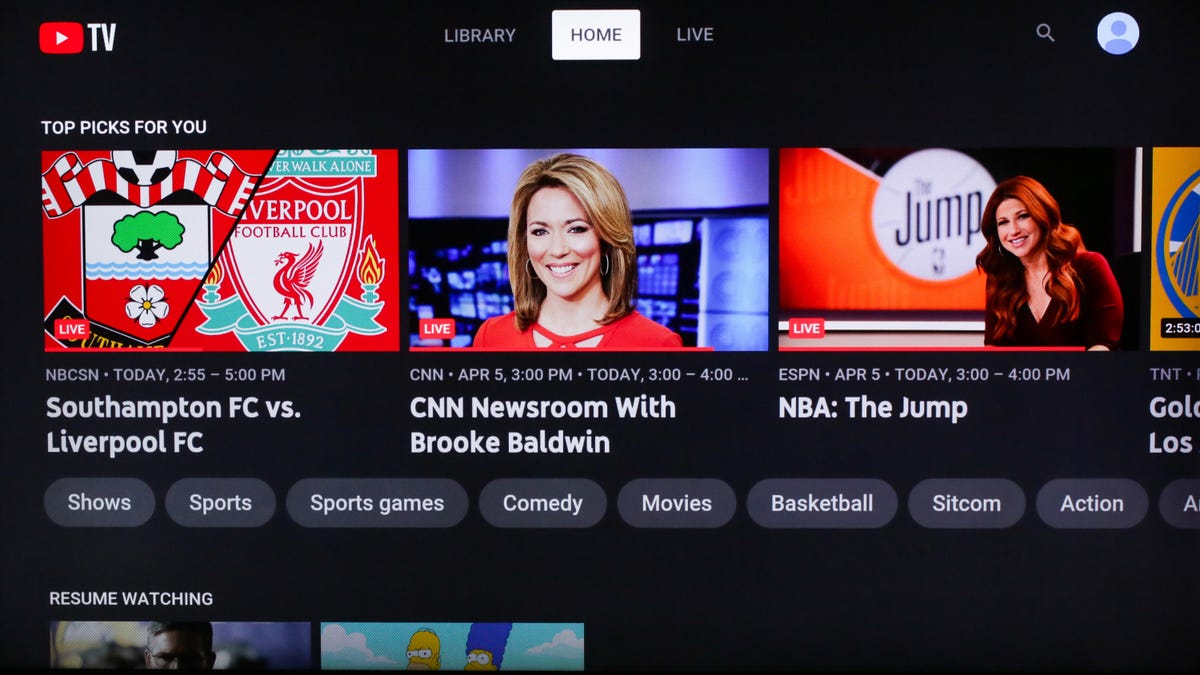

The YouTube TV interface on Roku.
Sarah Tew/CNETThe menus and interfaces on both are quite different from one another and from regular cable, and we like YouTube TV’s menus better overall.
YouTube TV: In general the YouTube TV interface is easier to use, and not just to people used to using regular YouTube. If you’re using the desktop or app versions, Google’s streamer offers a streamlined structure — even if it’s not as pretty as Hulu.
Hulu Plus Live TV: If it was all a matter of which interface is more fun, then Hulu would take it. Hulu’s look is brighter, and though it lacks YouTube’s comprehensive search it’s still relatively easy drill down into the kind of content you want to watch.
The difference in the number of simultaneous streams is worth noting, especially for families and other households who watch a lot of TV. YouTube TV lets you stream to three different devices — say, the living room TV, a bedroom TV and a tablet — at the same time, while Hulu lets you stream to two. Pay Hulu a hefty $10 extra per month and it will upgrade your number of streams to unlimited.
YouTube TV has an excellent cloud DVR but Hulu closed the gap with an upgrade in 2022. Both now have unlimited storage and let you fast-forward through commercials in recorded content, so while we still consider YouTube TV’s DVR the gold standard, Hulu’s is very good too.
Read more: Best TV Antenna for 2023
On-demand and originals: Hulu with the runaway win


Only Murders in the Building is an Hulu exclusive
HuluYouTube TV includes on-demand TV shows and movies from participating networks and shows, much like your cable service, and also offers YouTube Originals commercial-free. But it pales in comparison to Hulu.
As we mentioned above, a Hulu Plus Live TV subscription unlocks all of the on-demand TV shows and movies available on the standard Hulu service, including thousands of episodes of network TV shows, as well as originals like The Bear, The Handmaid’s Tale, Only Murders in the Building, Pam & Tommy and the movie Palm Springs. It also includes a Disney Plus and ESPN Plus subscription, with their massive on-demand libraries.
Read more: Hulu: The 42 Best TV Shows to Watch Now
Which service is best for you?
Both services represent the peak of what live TV streaming has to offer, and both are better overall than the other two major premium options, FuboTV and DirecTV Stream. Your choice between the two comes down to cost, channel selection, usability and content, and in our book YouTube TV bests Hulu Plus Live TV in most of those areas. Hulu enables you to integrate a wide channel selection with its exemplary on-demand library which may be worth it for some. In the end though it’s all about having access to your favorite channels, so choose the service which gives you the channels you want.
Channel comparison
Below you’ll find a chart that’s a smaller version of this massive channel comparison. It contains the top 100 channels from each service. Some notes:
- Yes = The channel is available on the cheapest pricing tier. That price is listed next to the service’s name.
- No = The channel isn’t available at all on that service.
- $ = The channel is available for an extra fee.
- Not every channel a service carries is listed, just the «top 100» as determined by CNET’s editors. Minor channels like AXS TV, CNBC World, Discovery Life, GSN, POP and Universal Kids didn’t make the cut.
- Regional sports networks — channels devoted to showing regular-season games of particular pro baseball, basketball and hockey teams — are not listed. To find out if your local RSN is available you can search YouTube TV by ZIP code here and search Hulu Plus Live TV by ZIP code here.
Read more: Best live TV streaming service for cord-cutters: YouTube TV, Sling TV, Hulu and more compared
Top 100 Channels
| Channel | YouTube TV ($65) | Hulu with Live TV ($70) |
|---|---|---|
| Total channels: | 78 | 74 |
| ABC | Yes | Yes |
| CBS | Yes | Yes |
| Fox | Yes | Yes |
| NBC | Yes | Yes |
| PBS | Yes | No |
| CW | Yes | Yes |
| MyNetworkTV | Yes | Yes |
| Channel | YouTube TV ($65) | Hulu with Live TV ($70) |
| A&E | No | Yes |
| ACC Network | Yes | Yes |
| Accuweather | No | No |
| AMC | Yes | No |
| Animal Planet | Yes | Yes |
| BBC America | Yes | No |
| BBC World News | Yes | No |
| BET | Yes | Yes |
| Big Ten Network | Yes | Yes |
| Bloomberg TV | No | Yes |
| Boomerang | No | Yes |
| Bravo | Yes | Yes |
| Channel | YouTube TV ($65) | Hulu with Live TV ($70) |
| Cartoon Network | Yes | Yes |
| CBS Sports Network | Yes | Yes |
| Cheddar | Yes | Yes |
| Cinemax | $ | $ |
| CMT | Yes | Yes |
| CNBC | Yes | Yes |
| CNN | Yes | Yes |
| Comedy Central | Yes | Yes |
| Cooking Channel | No | $ |
| Destination America | No | $ |
| Discovery Channel | Yes | Yes |
| Disney Channel | Yes | Yes |
| Disney Junior | Yes | Yes |
| Disney XD | Yes | Yes |
| E! | Yes | Yes |
| EPIX | $ | No |
| ESPN | Yes | Yes |
| ESPN 2 | Yes | Yes |
| ESPNEWS | Yes | Yes |
| ESPNU | Yes | Yes |
| Food Network | Yes | Yes |
| Channel | YouTube TV ($65) | Hulu with Live TV ($70) |
| Fox Business | Yes | Yes |
| Fox News | Yes | Yes |
| Fox Sports 1 | Yes | Yes |
| Fox Sports 2 | Yes | Yes |
| Freeform | Yes | Yes |
| FX | Yes | Yes |
| FX Movies | Yes | Yes |
| FXX | Yes | Yes |
| FYI | No | Yes |
| Golf Channel | Yes | Yes |
| Hallmark | Yes | Yes |
| HBO/HBO Max | $ | $ |
| HGTV | Yes | Yes |
| History | No | Yes |
| HLN | Yes | Yes |
| IFC | Yes | No |
| Investigation Discovery | Yes | Yes |
| Lifetime | No | Yes |
| Lifetime Movie Network | No | Yes |
| Magnolia | No | $ |
| Channel | YouTube TV ($65) | Hulu with Live TV ($70) |
| MLB Network | No | No |
| Motor Trend | Yes | Yes |
| MSNBC | Yes | Yes |
| MTV | Yes | Yes |
| MTV2 | Yes | $ |
| National Geographic | Yes | Yes |
| Nat Geo Wild | Yes | Yes |
| NBA TV | Yes | No |
| NBC Sports Network | Yes | Yes |
| NFL Network | Yes | Yes |
| NFL Red Zone | $ | $ |
| NHL Network | No | No |
| Nickelodeon | Yes | Yes |
| Nick Jr. | Yes | Yes |
| Nicktoons | Yes | $ |
| OWN | Yes | Yes |
| Oxygen | Yes | Yes |
| Paramount Network | Yes | Yes |
| Science | No | $ |
| Channel | YouTube TV ($65) | Hulu with Live TV ($70) |
| SEC Network | Yes | Yes |
| Showtime | $ | $ |
| Smithsonian | Yes | Yes |
| Starz | $ | $ |
| Sundance TV | Yes | No |
| Syfy | Yes | Yes |
| Tastemade | Yes | No |
| TBS | Yes | Yes |
| TCM | Yes | Yes |
| TeenNick | Yes | $ |
| Telemundo | Yes | Yes |
| Tennis Channel | No | No |
| TLC | Yes | Yes |
| TNT | Yes | Yes |
| Travel Channel | Yes | Yes |
| TruTV | Yes | Yes |
| TV Land | Yes | Yes |
| USA Network | Yes | Yes |
| VH1 | Yes | Yes |
| Vice | No | Yes |
| WE tv | Yes | No |
| Channel | YouTube TV ($65) | Hulu with Live TV ($70) |
Technologies
The Black Friday Gaming Deals You Want Are Already Here, Including PlayStation, Xbox and Alienware
Technologies
The Black Samsung Galaxy Z Fold 7 Is at a Record $443 Off at Amazon for Black Friday
A Galaxy Z Fold 7 price war between Amazon and Samsung gives us a record-low deal for one color.
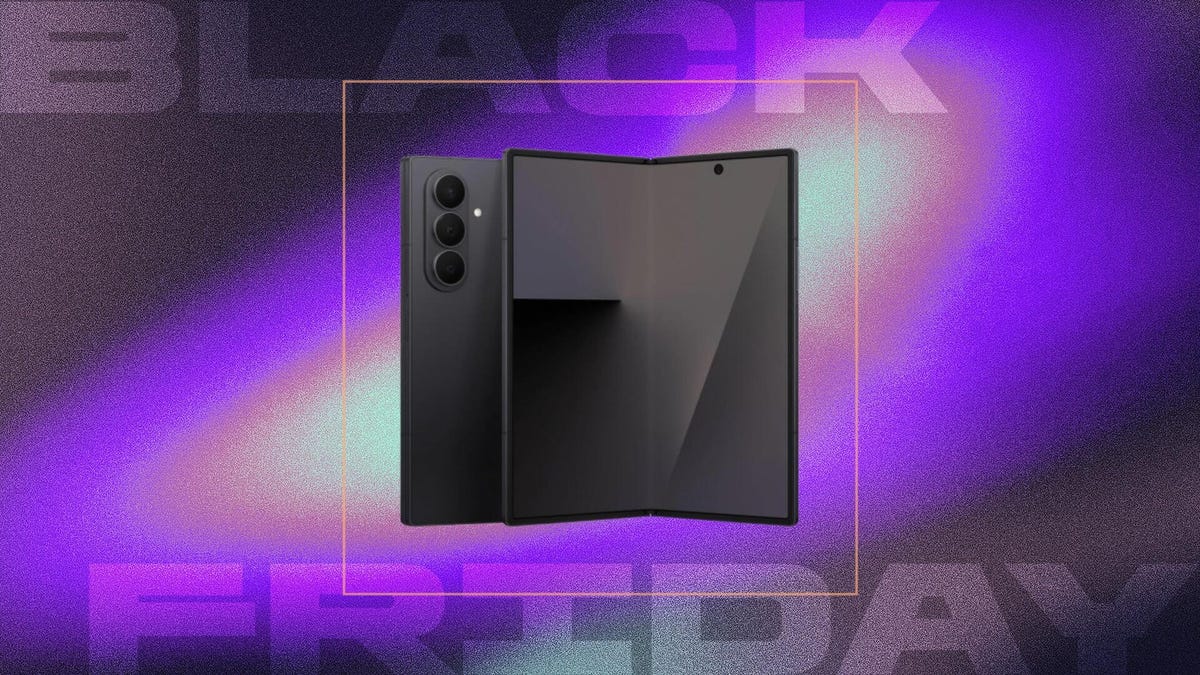
If you’re looking for a foldable iPhone, you’re gonna need to wait until 2026, but if you’re looking for the best foldable phone of 2025, there are great deals on the Galaxy Z Fold 7 right now at both Amazon and Samsung, with the former dropping the black version of Samsung’s foldable phone to a record-low $1,557. All other models are $1,600 at both Amazon and Samsung, a $400 discount.
Samsung’s unique foldable phones had an awkward adolescence, but after getting her hands on the new lineup, CNET reviewer Abrar Al-Heet confirms that the latest Z Fold 7 «just feels right.» For one, it’s incredibly sleek at just 8.9mm thick when closed or 4.2mm thick when open, which is so thin you may even forget that it’s foldable.
Hey, did you know? CNET Deals texts are free, easy and save you money.
Despite weighing just 215 grams, this foldable features some serious hardware. It has a 6.5-inch cover screen and an 8-inch interior display with a fluid 120Hz refresh rate. It’s equipped with a cutting-edge Snapdragon 8 Elite processor and 12GB of RAM to support tons of helpful AI features and functions, and comes with Android 16 and Samsung One UI 8 right out of the box.
The camera system is also pretty impressive, boasting a 200-megapixel rear camera, 12-megapixel ultrawide shooting and a 10-megapixel front camera on both the cover and interior screens. Plus, it’s equipped with a 4,400-mAh battery for all-day use.
MOBILE DEALS OF THE WEEK
-
$749 (save $250)
-
$475 (save $175)
-
$499 (save $300)
-
$900 (save $400)
Why this deal matters
With an unbelievably sleek design and cutting-edge hardware, the impressive Samsung Galaxy Z Fold 7 is our favorite foldable phone on the market. But it also comes with a staggering $2,000 price tag, and if you’re hoping to get your hands on one, this $443 discount is a way to rack up some serious savings and help cushion the blow of its considerable cost. Just be sure to get your order in soon, as we doubt this deal will remain live for long.
Join Our Daily Deals Text Group!
Get hand-picked deals from CNET shopping experts straight to your phone.
By signing up, you confirm you are 16+ and agree to receive recurring marketing messages at the phone number provided. Consent is not a condition of purchase. Reply STOP to unsubscribe. Msg & data rates may apply. View our Privacy Policy and Terms of Use.
Technologies
I Almost Missed This Deal Within a Deal for Baseus’ Bose-Infused Headphones and Earbuds
Baseus’ new Inspire XH1, XP1 and XC1 models with Sound by Bose are 23% to 33% off for Black Friday and Cyber Monday. But Baseus throws in its BC1 clip-on earbuds or other «free» bonus items to make the deal even sweeter.

I gave CNET Editors’ Choice awards to Baseus’ Bose-infused Baseus Inspire XH1 headphones and Inspire XP1 earbuds because they’re well designed and sound decent for what they cost. I also liked Baseus’ Inspire XC1 clip-on earbuds, which have dual- drivers and earned a spot on CNET’s best clip-on earbuds list.
Last week all three models were selling for around $110 (though they have higher list prices), but they’re now discounted to around $100 for Black Friday and Cyber Monday. That’s a deal I’d highlight on its own, but if you click through to any of those models’ Amazon product pages an look closely you’ll see that each is eligible for «one free item» with purchase.
Read more: Best wireless earbuds of 2025
You have to click the «how to claim link» and then add one of the three products to the your cart. Once one of the headphones or earbuds is added to your cart, you can click a button on the left side of screen (above the stars for average ratings) that switches the view from «qualifying items» to «benefit items.» You can then add Baseus’s BC1 clip-on earbuds, which list for $40, to your cart as a free item. Baseus’ step-up Basues MC1 Pro ($48 for Black Friday) and Inspire XC1 clip-on buds sound better, but the BC1 are fine for casual use.
If the BC1 earbuds option doesn’t thrill you, there are other freebies you can opt for. Just go back to the Amazon product page for the Inspire XH1, XP1 and XC1 and you’ll see options for one free item with $100, $90, $51 and $46 purchases. The $90 benefit item is a 30W dual-port fast charger (list price $20), which is decent, and the $51 benefit item is a retractable USB-C cable ($19 list) that’s useful. Don’t bother with the $46 benefit item.
You can read my full reviews of the Inspire XH1 headphones here and the Inspire XP1 earbuds here. And here’s my quick take of the Inspire XC1 earbuds:
Like Baseus’ noise-isolating Inspire XP1 earbuds that I rated highly, the Inspire XC1 feature «Sound by Bose» and a more premium design than earlier Baseus earbuds. The XC1 don’t sound as good as the XP1, but they sound good for open earbuds and are equipped with dual drivers, one of which is a Knowles balanced-armature driver that helps improve treble performance. While they don’t produce as much bass as noise-isolating earbuds like the Inspire XP1, their bass performance is better than I expected. The buds’ sound is pretty full, especially in quieter environments, though they do better with less bass-heavy material (I did notice a bit of distortion at higher volumes with certain tracks with harder driving bass).
While I prefer the design and fit of Bose’s Ultra Open Earbuds (as well as the design of their case) and think the Bose buds sound more natural and a tad better overall, the much more affordable Inspire XC1 fit comfortably and offer top-tier sound for clip-on open earbuds (and they play louder than the Bose), as well as decent voice-calling performance with good background noise reduction.
HEADPHONE DEALS OF THE WEEK
-
$248 (save $152)
-
$170 (save $181)
-
$298 (save $131)
-
$199 (save $150)
Read more: Best Black Friday headphones deals
Join Our Daily Deals Text Group!
Get hand-picked deals from CNET shopping experts straight to your phone.
By signing up, you confirm you are 16+ and agree to receive recurring marketing messages at the phone number provided. Consent is not a condition of purchase. Reply STOP to unsubscribe. Msg & data rates may apply. View our Privacy Policy and Terms of Use.
-

 Technologies3 года ago
Technologies3 года agoTech Companies Need to Be Held Accountable for Security, Experts Say
-

 Technologies3 года ago
Technologies3 года agoBest Handheld Game Console in 2023
-

 Technologies3 года ago
Technologies3 года agoTighten Up Your VR Game With the Best Head Straps for Quest 2
-

 Technologies4 года ago
Technologies4 года agoBlack Friday 2021: The best deals on TVs, headphones, kitchenware, and more
-

 Technologies4 года ago
Technologies4 года agoVerum, Wickr and Threema: next generation secured messengers
-

 Technologies4 года ago
Technologies4 года agoGoogle to require vaccinations as Silicon Valley rethinks return-to-office policies
-

 Technologies4 года ago
Technologies4 года agoOlivia Harlan Dekker for Verum Messenger
-

 Technologies4 года ago
Technologies4 года agoiPhone 13 event: How to watch Apple’s big announcement tomorrow

